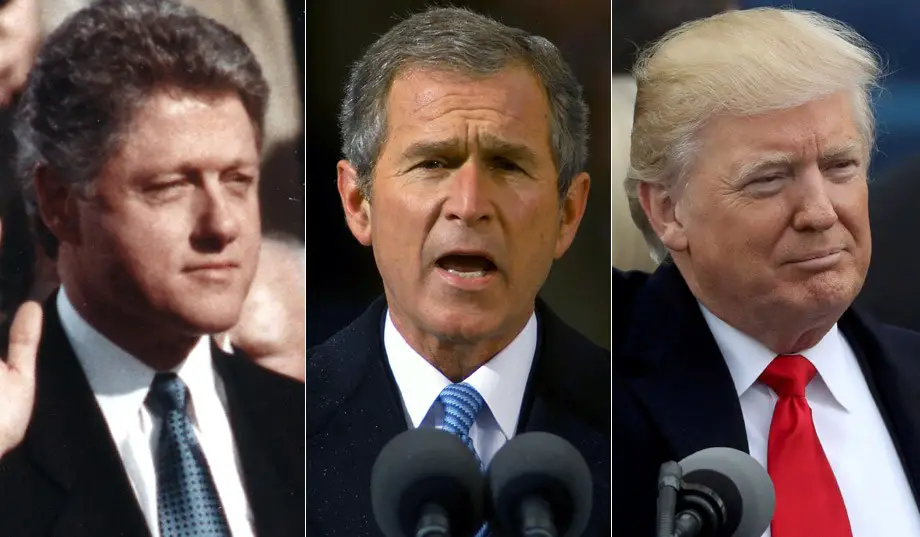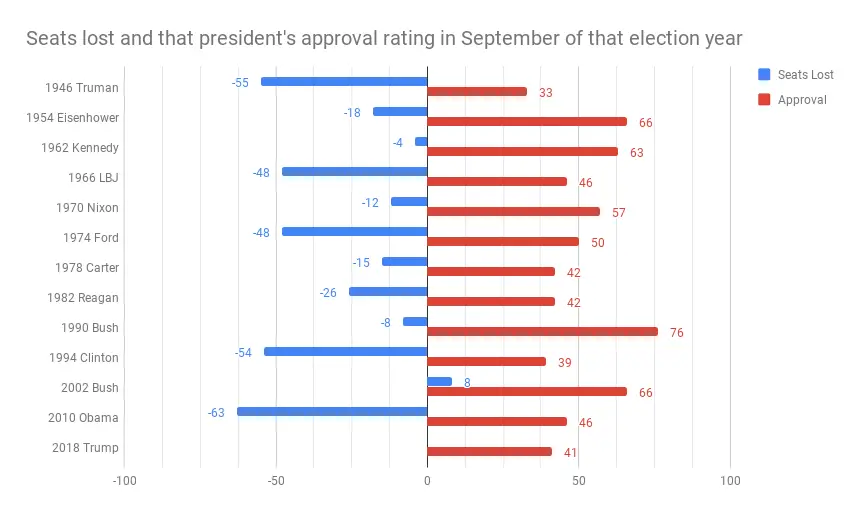A party’s performance in midterm elections, which are classified as elections outside a Presidential year midway through the President’s term, is often tied closely to the approval rating of the sitting President. The average midterm loss since 1946 is 28.6 seats, so it’s not out of line to expect Republicans to lose seats in 2018 if historical trends continue to hold. The question worth asking is how many seats could they lose? NBC News put together a report on Presidential Approval ratings tied with midterm performance and here is what the results forecast for 2018.
First, the number of midterm seats lost, charted back to 1946, which gives us some historical perspective of how Presidents tend to perform when it comes to gaining and losing seats in their first midterm election since becoming President. The only exception to losing seats was President George W. Bush, in 2002, which is largely attributed to the attitude of the nation following the September 11, 2001, terrorist attacks.
The worst performances were President Obama, with 63 lost seats, and President Clinton, with 54 lost seats. If we consider Obama 2010 the low-water mark, and Bush 2002 the most optimistic scenario, then somewhere in the realm of losing 20-30 seats seems like a reasonably conservative number to settle on for Republicans in 2018.
Beyond guessing based on history of lost seats alone, we can look at how Presidential approval ties into the losses, seen this chart below:
Reading this chart, which combines seats lost with the President’s approval rating in September, it’s clearly noticeable that higher approval ratings seem to stem the losses in Congress. The biggest outlier to this rule tends to be President Gerald Ford in 1974, though this was following the Watergate years so Ford’s party was being punished more than would have been typically expected.
If President Trump’s approval, currently at 41 percent according to Gallup, holds steady, then it’s possible he could see losses that rival President Clinton or President Obama, with 50+ seats in play. However, there are precedents of Jimmy Carter and Ronald Reagan with approval in the 40s holding the losses to 15 seats and 26 seats, respectively.
A reasonable estimate would put President Trump anywhere from a loss of 15 seats to as high as 63 seats based on historical precedent coupled with approval ratings. That is a big range, and it means that he could conceivably lose a number of seats and still hold the House, or lose scores of seats and the chamber falls strongly in Democratic hands. Democrats need to win 25 new seats to take control which is well within the margin of possibility. Where we land on this spectrum will be determined by campaigning over the next 60+ days as the countdown toward Election Day on November 6, 2018, rolls forward.
Donate Now to Support Election Central
- Help defend independent journalism
- Directly support this website and our efforts


